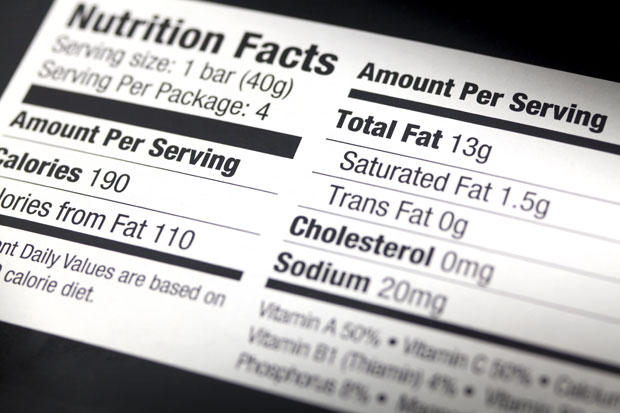How to Lose Weight by Controlling Insulin
Insulin is a natural hormone that's secreted from your pancreas in response to the intake of carbohydrates. Insulin helps your body use glucose (also known as blood sugar). Without insulin, your body cannot pull glucose into your cells to use for energy. However, too much insulin and too many carbohydrates tells your body to turn those extra carbohydrates into storage - or fat.[1] This is especially true in regards to abdominal or visceral fat. In addition, increased insulin levels tell your body to continue to use glucose for energy and not use that stored fat.[2] Changing your diet and lifestyle can help manage and control insulin levels to that you can maintain or even lose weight.
Steps
Method 1 Using Diet to Manage Insulin Levels
-
1
Limit your daily intake of carbohydrates. Your pancreas produces the most insulin when you consume a carbohydrate rich meal. This is bad, especially when you're aiming to lose abdominal fat. Controlling the amount and type of carbohydrates you eat throughout the day can help you manage your insulin levels.[3]
- Carbohydrates are found in the following foods: grains, starchy vegetables, legumes, fruits and dairy products. They are also found in sweets and sweetened beverages.
- Carbohydrates are found in a wide variety of food groups. Because they are so wide spread, it's not realistic or healthy to completely avoid carbohydrates.
- There is no right or wrong diet style when it comes to limiting your carbohydrates. You may choose to follow a diabetic diet, a low-carb diet or come up with your own specific diet plan to help manage your carbohydrate intake and insulin levels.
-
2
Consume moderate amounts of grains. Foods like bread, rice or pasta are significantly higher in carbohydrates compared to other food groups. Although these foods are considered a healthy part of a balanced diet, they will raise your blood sugar and insulin levels quicker and higher than other food groups.
- Limit your consumption of grain based foods. You do not have to completely avoid them, but it may be ideal to limit yourself to only 1-2 servings daily.
- One serving of grains is about 1 ounce or 1/2 cup.[4]
- When you're choosing to eat grains, try to choose 100% whole grains. These are higher in fiber and other nutrients that can support a healthy diet.[5]
- Whole grain foods include: quinoa, barley, brown rice or 100% whole wheat bread.
-
3
Increase your daily intake of fiber. Fiber is typically found in more complex carbohydrates. These are carbohydrates that digest slowly and release blood sugar or glucose into your blood stream more slowly. This helps prevent a spike in insulin.[6]
- Foods that are high in fiber include: beans, lentils, fruits, vegetables and whole grains.
- In general, women need about 25 g of fiber daily and men need about 38 g of fiber daily. Aiming to meet these minimums can help you manage your insulin levels more efficiently.[7]
- Try to include a fiber rich food at each meal and snack. This will help you manage insulin levels throughout the entire day.
-
4
Eat healthy fats. Healthy fats, like omega-3 fats, not only support a healthy heart, but also slow the digestion of food like carbohydrates. Including healthy fats throughout your day can help slow the digestion and absorption of carbohydrates and manage insulin levels.[8]
- Healthy fats are found in a variety of foods including: olive oil, fatty fish, avocados, nuts and seeds.
- Include 1-2 servings of healthy fats daily. One teaspoon of oils, 3-4 ounces of fish, 1/4 cup of nuts or seeds and 1/2 cup of avocado counts as a serving.[9]
-
5
Avoid or limit simple carbohydrates. Some foods cause a quick spike or rise in blood sugar and insulin levels. Simple carbohydrates are known to be low in fiber and include: sweetened beverages, sweets or desserts, refined grain products (like white rice) and foods made from white flour (like white bread).
- Instead of drinking sugary, sweet beverages, stick to no or low calories beverages. Try: water, flavored water, decaf coffee or tea.
- It's most likely unrealistic to completely give up sweets and desserts. Limit them in your diet and stick to smaller portions.
- Also limit refined grain products. These are not only low in fiber, but also low in a variety of other healthy nutrients. Try to choose 100% whole grain as often as possible.
-
6
Eat well-balanced meals. You may be inclined to follow a low-carb diet and minimize your consumption of foods like grains, starchy vegetables or fruits to help control insulin levels. However, eating a well-balanced diet will support weight loss and insulin control.[10]
- Examples of well-balanced meals to help manage insulin levels include: scrambled eggs with vegetables and cheese, a mixed green salad with grilled salmon and a chicken and vegetable stir fry with 1/3 cup quinoa.
- In addition, eat regularly throughout the day. Skipping meals or going too long without eating can cause low blood sugars and decreased stability in insulin levels.[11]
-
7
Follow a Mediterranean style diet. Increase your fiber and healthy fat intake will help manage insulin levels.[12] A Mediterranean style diet typically promotes the consumption of high fiber fruits and vegetables, fatty fish, dairy products and whole grains.
- This type of diet or eating pattern has also been shown to help reduce high blood pressure, diabetes and heart disease.[13]
- Those following this diet eat poultry or eggs only 1-2 times weekly and limit red meet to less than 1 time a week or just occasionally throughout the month.[14]
Method 2 Modifying Your Lifestyle to Manage Insulin Levels
-
1
Meet with your doctor. If you feel that your insulin levels are out of control or are having a profound effect on your diet, overall health and lifestyle it might be a good idea to meet with your primary care doctor first.
- Talk to your doctor about your symptoms (if any), goal to control and manage insulin and any weight goals you have.
- Also consider meeting with a registered dietitian. These nutrition experts will be able to help you lose weight but also help manage insulin levels.
-
2
Increase the amount of sleep you get. If you can't exactly increase your sleep, then at least try to stabilize your sleep levels. Studies have shown that the more sleep you get, the more stable your insulin levels will be.[15]
- The general recommendation is get 7-9 hours sleep each night.[16]
- Help increase your odds of sleeping longer and more soundly by: turning off all the lights in your bedroom, turning off all electronics like the TV or cell phone, and giving up caffeine 3 hours prior to going to sleep.[17]
-
3
Exercise regularly. Regular exercise not only helps you manage weight but also can help you control insulin levels. Exercise cannot lower insulin levels however exercise helps manage glucose levels and can prevent insulin levels from spiking.[18]
- Include regular cardiovascular exercise throughout the week. Cardio helps your body use glucose immediately.[19]
- The recommendation for aerobic exercise is at least 150 minutes or 2.5 hours per week of moderate intensity activity.[20]
- There's also a recommendation to include strength training 2 days a week. Strength training also has a positive effect on insulin control.[21] Strength training exercises include: weight lifting (uses machines or free weights), pilates or body weight exercises (like push-ups or crunches).
-
4
Start a journal. Keeping a journal of your food, weight progress and thoughts about your weight loss and progress can help keep you on track long-term.[22]
- Start a food journal to help you keep track on your meals, calorie levels and how often you're eating carbohydrate-rich meals. This may help you see where you can make changes.
- Also be sure to track your weight. Studies have shown that long-term tracking of weight helps keep people on track longer.[23]
-
Weight Loss Can Be Hard Without The Right Information
For many people, the subject of weight loss is a very personal to
-
Simple Tricks To Helping You Lose Weight
TIP! You will find that of you eat walnuts it will help you l
-
Snacking To Lose Weight
Is it really possible to use snacking to lose weight? Who says s
-
I Can Make You Thin - Paul McKenna
I just found about about this show called I Can Make You Thin st
-
Great Tips For Effective, Yet Simple, Weight Loss.
Are you trying to lose weight for the first time? You probably dont e
-
Weight Loss Tip #7 – Avoid sugary, salty and oily food
- DON'T MISS
- Effective And Natural Weight Loss Tips For Teens
- How To Overcome Your Weight Loss Plateau
- How To Get Rid Of Obesity And Useful Tips To Burn Out Your Fat
- Can you be fat and fit?
- Learn The Essential Seven Fast Weight Loss Tips For Bathing Suit Season
- Diet Chart For Control Obesity
- Foods to Include in a Simple Diet Plan for Weight Loss
- 13 Killer Foods For Fat Loss
- 4 Benefits of Dance
- Best 5 Weight Loss Tips For Women




